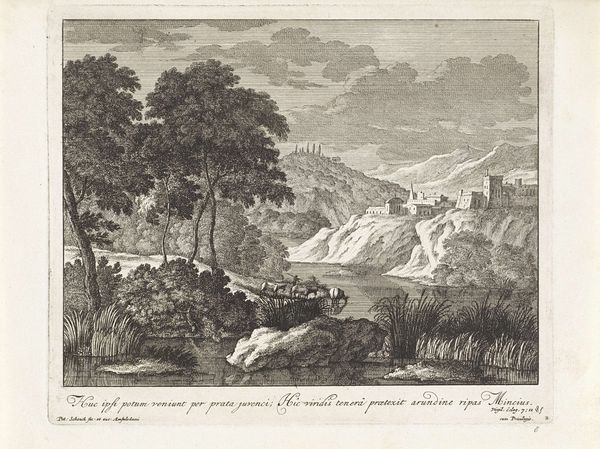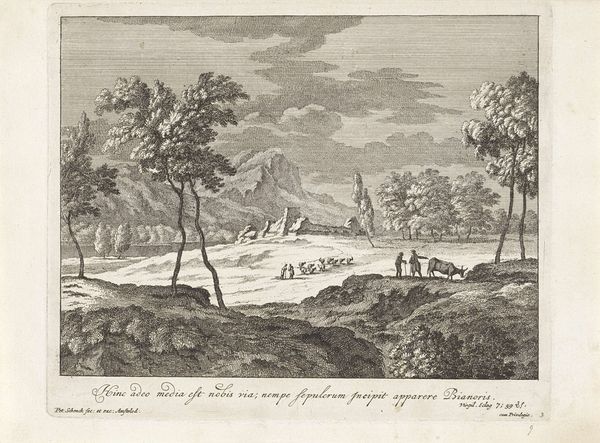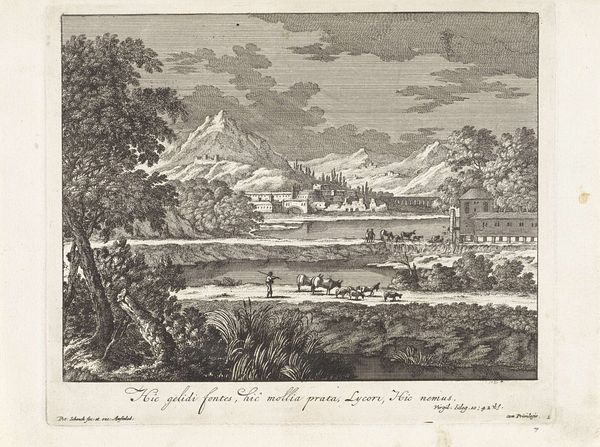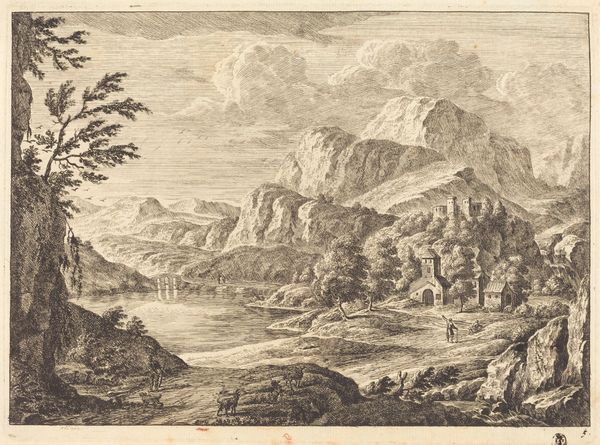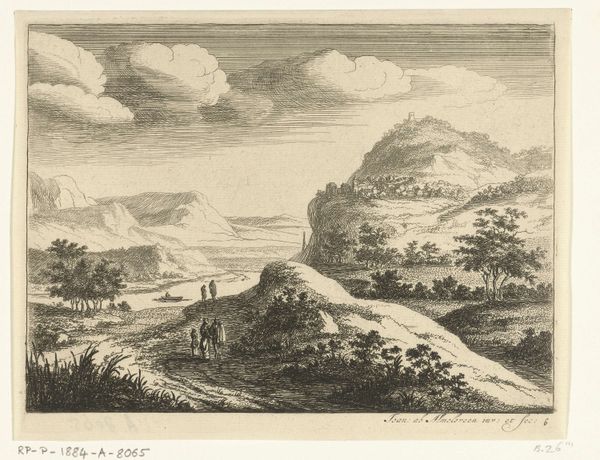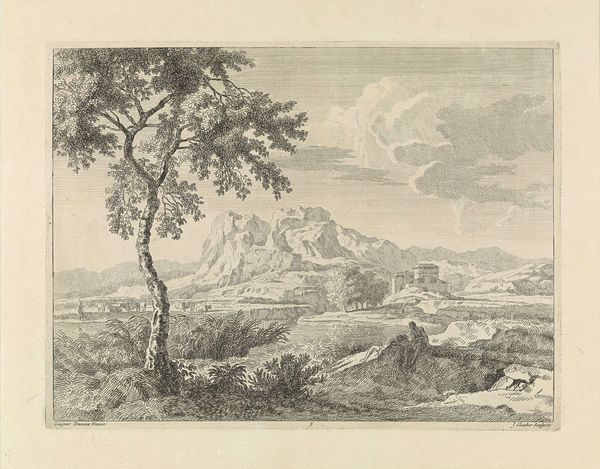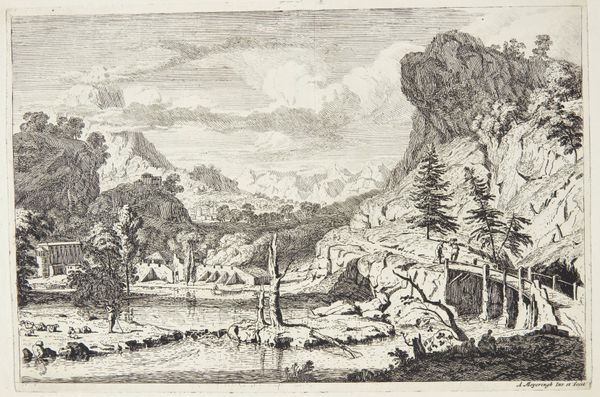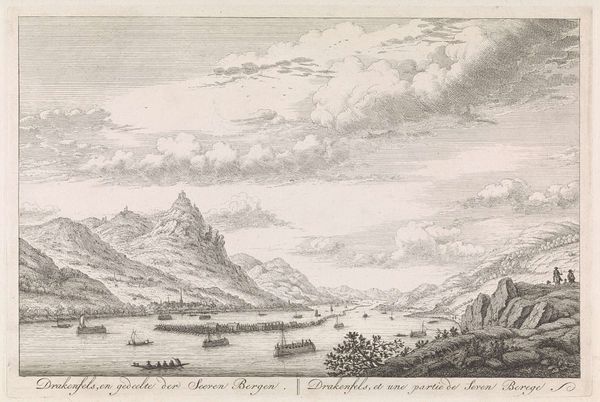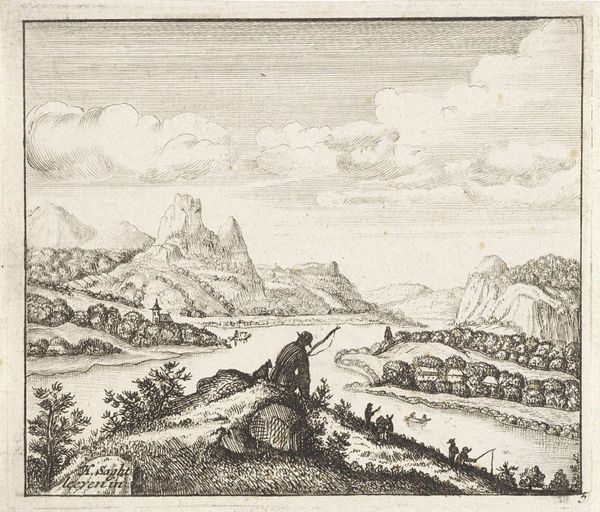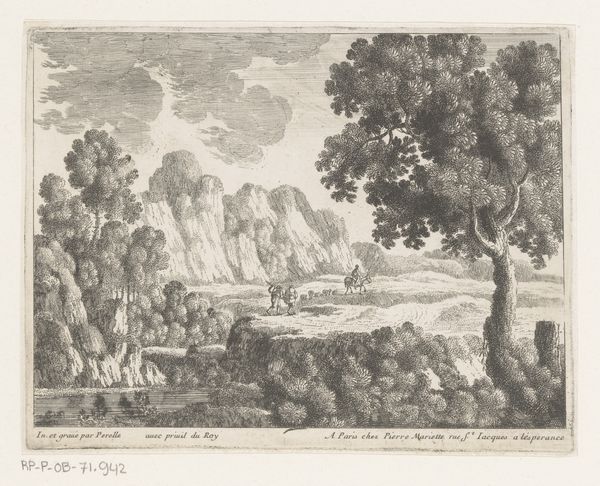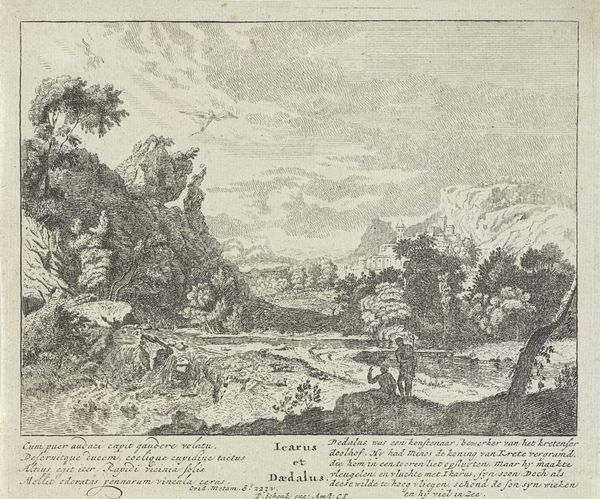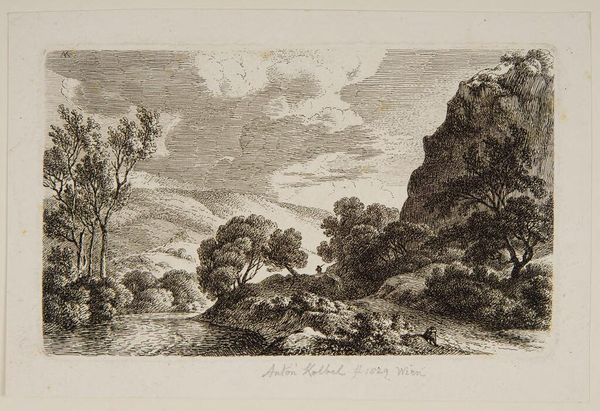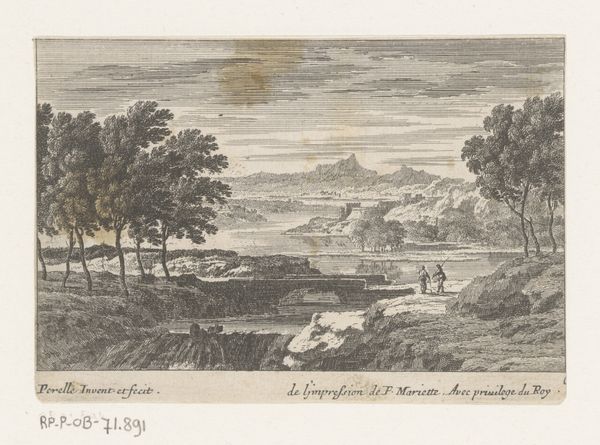
print, engraving
#
baroque
#
dutch-golden-age
# print
#
old engraving style
#
landscape
#
form
#
line
#
engraving
#
realism
Dimensions: height 169 mm, width 202 mm
Copyright: Rijks Museum: Open Domain
Curator: We're looking at "Landschap met rivier en bergen", or "Landscape with River and Mountains," an engraving dating from around 1675 to 1711, now held here at the Rijksmuseum, created by Pieter Schenk. Editor: Immediately, there's this overwhelming sense of vastness, but also an eerie stillness, don't you think? The meticulously etched lines create a soft, almost hazy light over the entire scene. Curator: I’m drawn to the printmaking process here, the sheer labor invested. Consider the socio-economic context. These detailed landscapes catered to a growing merchant class in the Dutch Golden Age, hungry for representations of property and control over land. Editor: Yes, and those mountains – that sharp, almost gothic peak amidst the rolling hills – that carries centuries of symbolic weight. Mountains represent the sublime, the challenge of nature, also spiritual aspiration and encounters with the divine. Note how Schenk uses contrasting diagonal lines to depict them and add depth. Curator: And observe the deliberate placement of the trees, those clumps. They're not just decorative; they represent cultivated areas, potential for industry, control over natural resources in that section of the artwork. The texture of the engraving simulates organic elements within its material form. Editor: They punctuate the composition rhythmically like carefully chosen words, don't they? Almost acting as witness or sentinel in the whole. Look how they lead the viewer's eyes towards the buildings nestled back there amidst the slope. What do you make of those buildings back there? Are they merely decorative or serve some purpose within the composition? Curator: Probably buildings that signify industry. Maybe mills or estates used for milling. Schenk depicts them subtly, not grand or impressive. This speaks to the quiet industry and exploitation happening withing society as well, rather than any feudal grandstanding. Editor: Interesting. And that text, inscribed at the bottom, in Latin. What meaning does that hold? Curator: Something about how the hills draw back. A fitting sentiment from the time. Editor: Indeed. Thinking about the historical symbols helps add greater value to Schenk's work and I can see now how they might relate to contemporary themes in his production of prints. Curator: And from a materials perspective, consider how many impressions were made, how this single plate enabled the mass distribution of an idealized landscape. The creation of images, which creates economic influence. Editor: Looking closer now I also realize I respond to the vast, melancholic spirit embodied in this artwork. It brings together notions of spiritual wonder and human vulnerability in response to natural events.
Comments
No comments
Be the first to comment and join the conversation on the ultimate creative platform.
